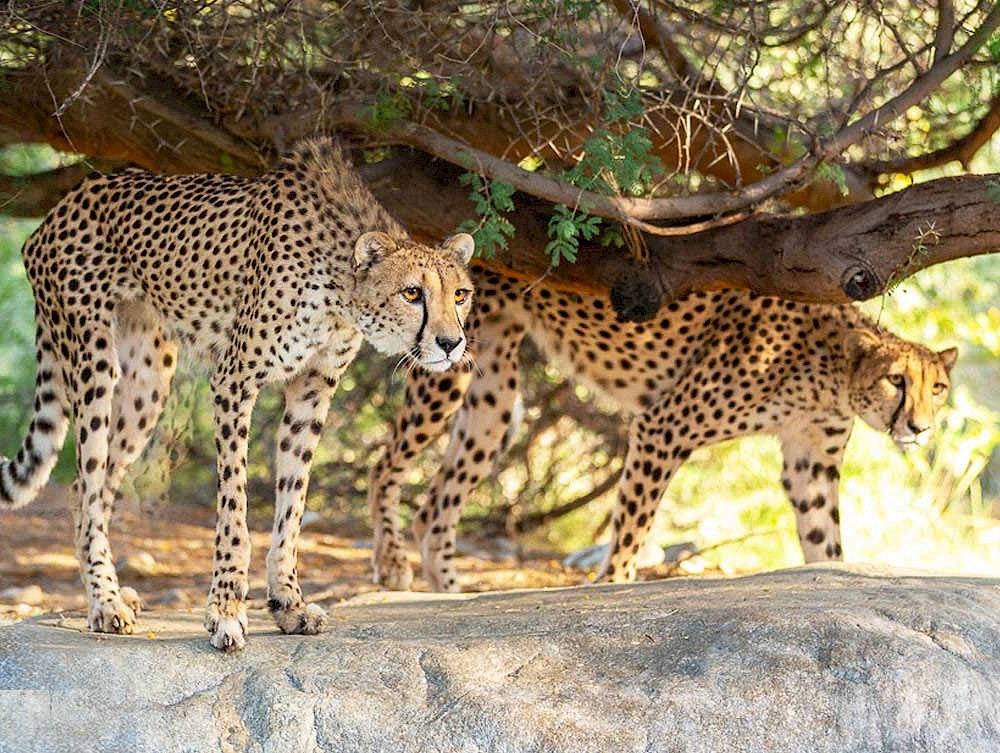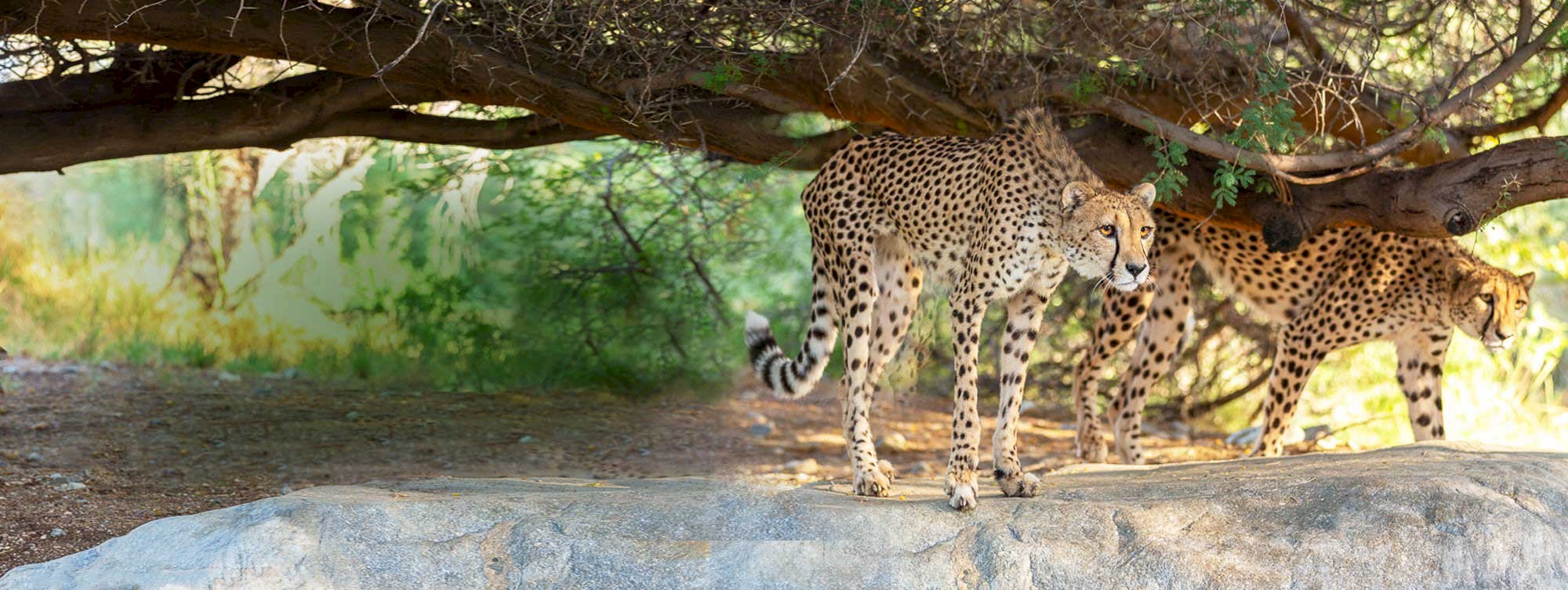Meet the neighbors: Black Rhinoceros
October 4, 2021
The new Rhino Savanna is being built with the desire to create a little slice of an African ecosystem and transfer it to the Coachella Valley. Rhinos are referred to as ecosystem engineers, meaning they disproportionately affect and alter the environment around them. From creating water collecting points, to clearing brush affording greater foraging ability to other species. This also makes rhinos a keystone species because without them the balance of an ecosystem can be negatively affected, making them an important member of the Rhino Savanna.
Black Rhinoceros
Black rhinoceros can weigh up to 3,000 pounds making them the size of your average car. Contrary to their name, black rhinos are not black, they are in fact grey. A more accurate name for them is the hook-lipped rhino which comes from their prehensile upper lip. Being browsers, they use this dexterous upper lip to grab tree and shrub branches, eating up to 75 pounds every day. That is the equivalent of 45 average sized bananas, eating that much is one reason they are an ecosystem engineer.
Did You know...
Black rhinoceros are critically endangered, meaning they are at a high risk of extinction with only around 5,000 individuals worldwide. Though illegal hunting remains a significant issue, conservation efforts are showing positive signs, with overall numbers gradually increasing.
Nia
Nia, whose name means “purpose” in Swahili, is our female black rhinoceros coming from Cleveland Metroparks Zoo in Cleveland, Ohio. Born August 20th, 2018, Nia is currently three years old and is coming to us as part of the black rhino Species Survival Plan recommendation. Female black rhinos reach maturity around 4-5 years of age, so Nia still has some growing to do, weighing roughly 2,000 pounds. She is described as intelligent and quick to learn new husbandry behaviors, which should make her very interesting to watch as she learns the ins and outs of her new home.
Did You Know...
Black rhinos are very tough animals, known to eat plants that are toxic or unpalatable to other species. Including a plant called euphorbia which is not only toxic to most animals but can cause severe damage if it contacts human skin or eyes.
Jaali
Jaali, which means “powerful” in Swahili, is our male rhino coming from Potter Park Zoo in Lansing, Michigan. He was born on December 24th, 2019, meaning Jaali will turn two years old soon after Rhino Savanna opens on November 12th. Being younger and weighing only 1,200 pounds Jaali has a lot of growing left to do. He is extremely friendly and always eager for scratches, which is good because skin care is vital for rhinos. They even mud bath for skin exfoliation, insect protection, and sunburn prevention.
Did You Know...
Rhino horns can become damaged by the sun just like your skin. Therefore, they have a dark section of melanin in the core of their horns which reduces sun damage and even partially responsible for the horn’s shape.









